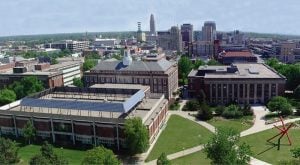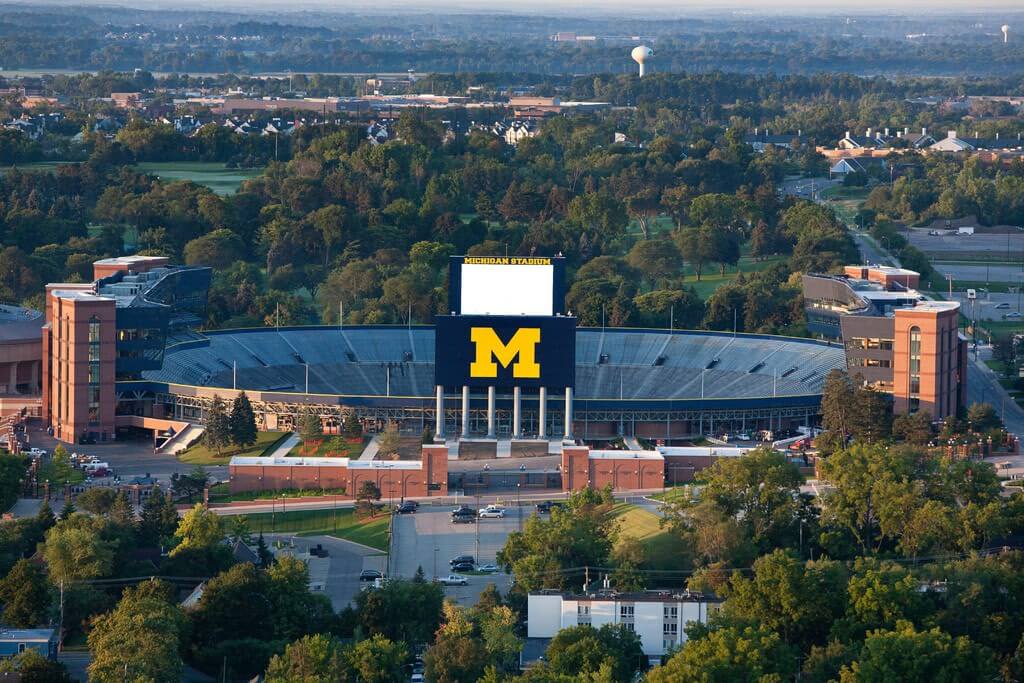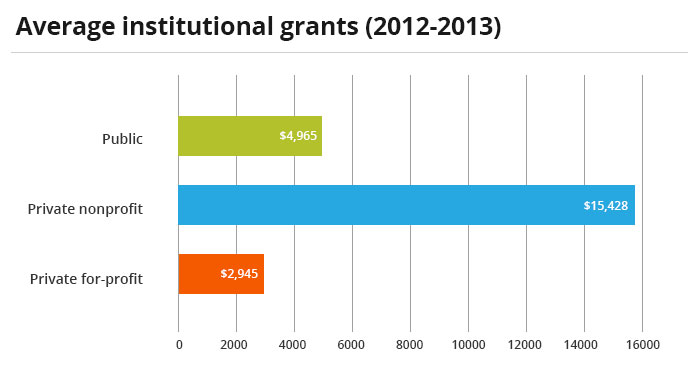Going to college is a dream of many graduating high school seniors, but choosing the right school can be a daunting task! A common question you’ll answer is “How large of a school do I want to attend?” There are drawbacks and upsides to attending some of the biggest colleges in the United States, and students should consider both before deciding that a large school is right for them. We’ve highlighted the 10 biggest colleges in the United States below, plus gave you some advice and tips to help you choose the best school for you!
What are the Biggest Colleges in the United States?
Colleges’ sizes can range from just a couple hundred of students to over 100,000. Attending a big college vs a small college can be a very different experience. Large schools, for example, tend to be on larger campuses and in major cities, though those aren’t hard and fast rules.
When crafting this list of the biggest colleges in the United States, we looked at the overall student population. This can include undergraduates, graduates, students on campus, hybrid students, online students, and those going after their professional or doctoral degrees.
1. Southern New Hampshire University
- Total enrollment: 164,091
- Size of campus: 300 acres
- Location: Manchester, NH
- Highest degree offered: Doctor’s degree
Southern New Hampshire University (SNHU) was founded in 1932. Today, a vast majority of its students are online and located all over the world. Famous alumni have included Jack Flanagan, a former New Hampshire state representative, comic book writer Ron Fortier, and President of Tanzania, Samia Suluhu. Business Administration and Management is by far the most popular major, with Psychology and General Studies coming in second and third.
2. Western Governors University
- Total enrollment: 156,935
- Size of campus: N/A
- Location: Salt Lake City, UT
- Highest degree offered: Post-master’s certificate
Western Governors University (WGU) is an entirely online college established in 1997 after a meeting of the Western Governors Association. Past students of the school have included NASCAR driver Sarah Fisher, author Hiram Bertoch, and Olympian Chaunte Lowe. Most students major in Registered Nursing, but other popular majors include Business Administration and Management, Elementary Education and Teaching, and Learning Sciences.
3. Grand Canyon University
- Total enrollment: 101,816
- Size of campus: 101 acres
- Location: Phoenix, AZ
- Highest degree offered: Doctor’s degree
A private for-profit Christian university, Grand Canyon University (GCU) is made up of 9 different colleges. Although it got its start as a nonprofit school in 1949, it became for profit in 2004. Alumni have gone on to become professional athletes, comedians, lawyers, and musicians. Although there are 200 areas of study available at GCU, many opt to study either Registered Nursing or Business Administration and Management.
4. Liberty University
- Total enrollment: 96,709
- Size of campus: 7,000 acres
- Location: Lynchburg, VA
- Highest degree offered: Doctor’s degree
Liberty University (LU) was originally founded in 1971 as Lynchburg Baptist College. It’s 7,000-acre campus features a 170,000 square foot four story library, the National Civil War Chaplains Museum, and a replica of the LIberty Bell. Graduates of the school went on to become voice actors, U.S. representatives, sportscasters, and more. Business Administration and Management and Interdisciplinary Studies are common majors among current students.
5. Pennsylvania State University
- Total enrollment: 88,914
- Size of campus: 22,484 acres (total statewide)
- Location: University Park, PA
- Highest degree offered: Doctor’s Degree
Pennsylvania State University (Penn State) has several campuses throughout the state of Pennsylvania. Their main campus, known as University Park is in central PA, but there are 19 campus locations found in the state as well as a World Campus. University Park alone is home to 7,343 acres and 48,928 students. Penn State was founded as Farmers’ High School of Pennsylvania in 1855 and wouldn’t get its current moniker until 1929.
6. University of Phoenix – Arizona
- Total enrollment: 88,891
- Size of campus: N/A
- Location: Phoenix, AZ
- Highest degree offered: Doctor’s degree
The University of Phoenix – Arizona is another online college. A private for-profit, UoPX was founded in 1976 and their online program was introduced in 1989. Business Administration and Management is by far the most popular major among current students, followed by Hospital and health Care Facilities Administration, Information Technology, and Registered Nursing.
7. Arizona State University
- Total enrollment: 80,065
- Size of campus: 1,532 acres(total)
- Location: Tempe, AZ
- Highest degree offered: Doctor’s degree
Arizona State University – or ASU or Arizona State – was founded in 1885 originally going by the name of Territorial Normal School. ASU has four regional learning centers, an online program, and five campuses. Famous alumni have included Pat Tillman, Jimmy Kimmel, David Spade, Nobel Laureates, Pulitzer Prize winners, and Olympians. Although there are roughly 350 undergraduate areas of study available at ASU, Business, Management, Marketing, and Related Support Services is the most popular.
8. Texas A&M University
- Total enrollment: 74,014
- Size of campus: 5,500 acres
- Location: College Station, TX
- Highest degree offered: Doctor’s degree
Also known as Texas A&M, TAMU, and A&M, Texas A&M University was founded in 1876 as Agricultural and Mechanical College of Texas. The campus features Research Park, The Century Tree (a campus landmark), and the George H.W. Bush Presidential Library and Museum. Commonly chosen majors include Interdisciplinary Studies, Biomedical Sciences, and Psychology.
9. Lone Star College System
- Total enrollment: 68,415
- Size of campus: N/A
- Location: The Woodlands, TX
- Highest degree offered: Bachelor’s degree
Rather than one school, the Lone Star College System is a series of school districts that make up a public community college system. Also known as LSC or LSCS, it was founded as North Harris County College in 1972. The school expanded in the coming decades before being renamed LSCS in 2007. Accredited programs include construction, nursing, occupational therapy, pharmacy, and more.
10. University of Central Florida
- Total enrollment: 68,346
- Size of campus: 1,893
- Location: Orlando, FL
- Highest degree offered: Doctor’s degree
A part of the State University System of Florida, the University of Central Florida (UCF) was first known as Florida Technical University when it was founded in 1963. Although the main campus is in Orlando, it has others in Bay Lake, Clermont, Cocoa, Daytona Beach, Kissimmee, and Sanford. Alumni have gone onto work in well known organizations including Google, Harris Corporation, Walt Disney Parks and Resorts, Orlando Magic, and NASA.
Benefits of Attending a Large College
- Greater Access to Resources. Large colleges tend to have more resources compared to smaller schools. Libraries are usually more expensive, career centers have access to more opportunities, and research is a central focus. This isn’t true of every large school, but since bigger colleges bring in more money, they tend to have money to spare on the extras.
- Large Networks. With more students, current and alumni, graduates have unique opportunities to network. Networks can spread far and wide, and connecting with the right people on campus can open the doors to some great positions within top companies. The college’s alumni network can be a fantastic resource.
- Wider Range of Majors and Extracurriculars. Bigger colleges and universities also tend to have more choices in general. There will be more majors, minors, degrees offered, certificates, clubs, sports, traditions, and extracurriculars. Small schools usually can’t compete with the offerings of a large college or university.
Cons of Attending a Large College
- Easy to Get Lost in the Crowd. Bigger schools usually equals bigger classes and higher student-to-faculty ratios. With large class sizes, it’s easy to go unnoticed by the professors unless you go out of your way to make a splash. Even with effort, you might not make the connections or impressions you’re going for.
- May Be Online-Focused. Many of the biggest colleges and universities in the United States are almost entirely online. If you don’t thrive in an online environment, these may not be the best options for you. Thankfully, though, there are plenty of large schools that offer a majority of classes in person or offer hybrid courses.
- Lots of Walking. Unless it’s an online school, you need a lot of space for all of those students. This means gigantic campuses. Walking from your dorm to class to the dining hall can be a workout and a half! Some campuses do have public transportation for students, but you’re definitely going to have to plan your days out to get from point A to point B.
5 Tips for Attending a Big School
Does a big school sound right for you? Here are some quick tips to help you adjust to the large campus or class size:
- Research the campus culture ahead of time. No matter what size school you’re attending, going on a campus visit this is a good idea. By researching big colleges in particular, you can get an idea of traditions, expectations, lectures, and more ahead of time.
- Check out public transportation. You don’t necessarily have to walk 10 miles every day. Public transportation is usually available on large campuses, but know the routes so you can arrive to your courses on time.
- Choose your dorm room wisely (and quickly). The best dorm rooms will go fast! Do your research and find the most desirable dorms on campus. They will likely be central to everything.
- Sit in the front of the class and participate. If you want to get noticed in a large lecture, you’re going to have to make an effort. This means sitting in front, answering questions, and signing up for unique class opportunities such as research projects.
- Consider online classes. Like the idea of a big school but not a huge campus? Many large colleges in the US are completely online or have robust online programs. It can be a great way to take advantage of unique resources while learning from the comfort of your home.
Find Your Perfect Sized College
Attending a big college in the United States can definitely be an exciting experience and the options vary throughout the country – and even online. However, the numbers don’t tell everything. You want to be sure you’re finding the school that matches you. One way to do that? By using our College Match tool. You can input details about your wants, needs, goals, income, and more to discover the perfect large colleges and universities that fit you. Get started today for free!







